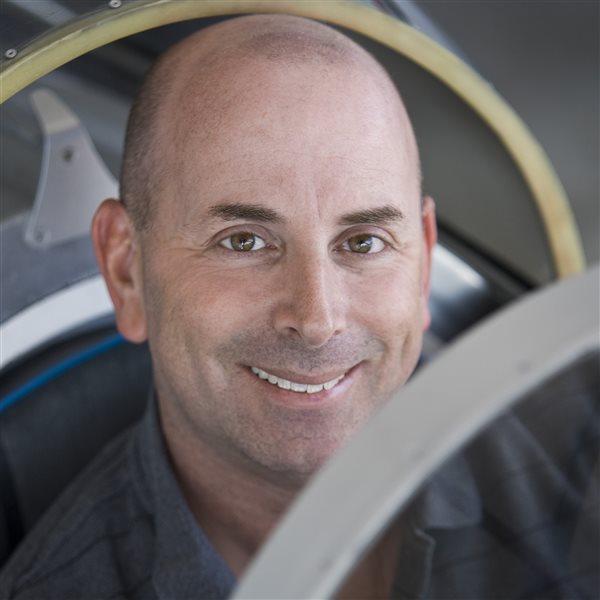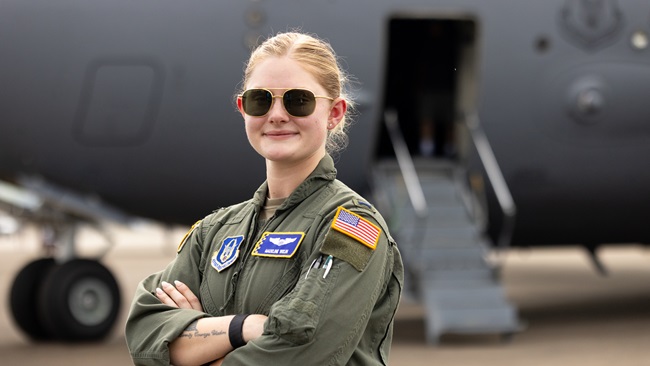Unusual Attitude
Mere Mortals

[email protected]
My task was to check out a former U.S. Air Force Thunderbird in a Beech Sierra, one of the least-complicated “complex” trainers ever devised. If you’ve ever wanted to feel wholly inadequate as an instructor, try teaching someone who has mastered the high-stakes art of low-level formation aerobatics in a supersonic jet something he doesn’t already know about aviation.
As a child, I remember being awed by the Thunderbirds and the U.S. Navy Blue Angels. As an adult, learning the basics of aerobatic and formation flying made my respect for their precision and consistency grow even more. So my 0.9-hour flight with Richard McSpadden, a new AOPA colleague who leads the AOPA Air Safety Institute (and used to lead the Thunderbirds), was almost sure to be a letdown. He couldn’t dazzle me with nine-G turns, vertical rolls, or inverted passes as he might in an F–16—and I was unlikely to teach him anything about flying, period.
I’m not sure what he took away from our flight (other than a few Garmin GNS 430 shortcuts). But our Sierra excursion surprised me, and it will change the way I fly.
First, McSpadden showed up happy, relaxed, and enthusiastic about getting airborne, even though we weren’t strapping ourselves to an afterburning jet. That alone got my attention. Any tension between us was broken when, while pulling the Sierra out of the hangar, I let the Beech tow bar come loose and promptly fell over backwards, Pink Panther-style, in a move worthy of Inspector Clouseau.
“See, you’ve already taught me something,” McSpadden quipped. “Don’t pull on the tow bar and turn the airplane at the same time or you’ll fall over.”
Once we were in the aircraft with the engine running, McSpadden surprised me again by not moving the airplane until he had studied the airport diagram. We were at AOPA’s home airport in Frederick, Maryland, and there’s only one taxiway between the hangar and the active runway. Many experienced pilots would take for granted that they knew the layout of the field. But even though (or perhaps because) McSpadden had flown at airports all over the world, he made sure he knew the airport layout before calling for a clearance. Something to emulate?
Once airborne, McSpadden flew with a veteran pilot’s unhurried and unforced smoothness and anticipation, and he actively sought out things to like about our humble airplane.
“It sure is comfortable,” he said admiringly, “and the visibility’s outstanding.”
Stalls and steep turns met ATP standards, and emergency procedures were straightforward, so we returned to the traffic pattern for a series of landings. He reflexively tuned the ATIS frequency for the latest weather, even though we’d only been away from the field a short time.
In the pattern, McSpadden stuck to target airspeeds like Velcro. He noted slight deviations out loud and corrected them. His landings were well within tolerances, but not always things of sublime beauty. In short, he flew like a well-trained, experienced, pro pilot who took nothing for granted and genuinely enjoyed being aloft. We returned the airplane undamaged, and I managed to help put it away without another slapstick somersault. But our short flight left me thinking.
Whenever I’d heard military demonstration pilots say in interviews that they’re just regular Joes and not imbued with any magical flying superpowers, that always struck me as false modesty. We all know that these pilots are screened, probed, and tested to extreme lengths. Surely, the people making the selections see some rare traits in the pilots they choose for these prestigious assignments.
But flying with McSpadden showed me the elite pilots have been telling the truth all along. They’re cut from the same mortal cloth as the rest of us. They’re superbly trained, practiced, and self-disciplined—but, like every other pilot on the planet, they’re not infallible.
That doesn’t detract from the extraordinary things the demonstration teams do. In fact, it makes their accomplishments all the more impressive. And the best part, to me, is that it hints at how much more the rest of us are capable of.



